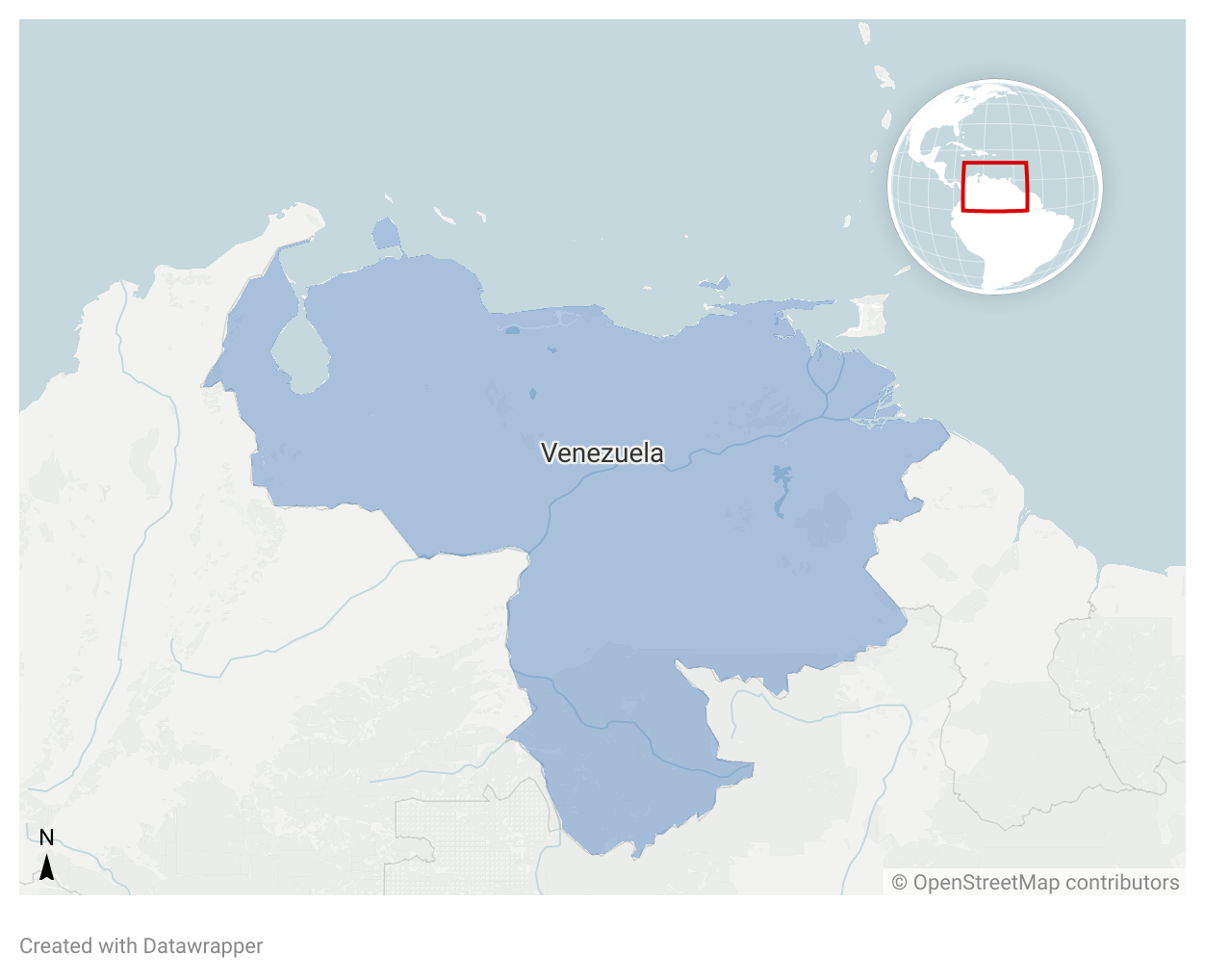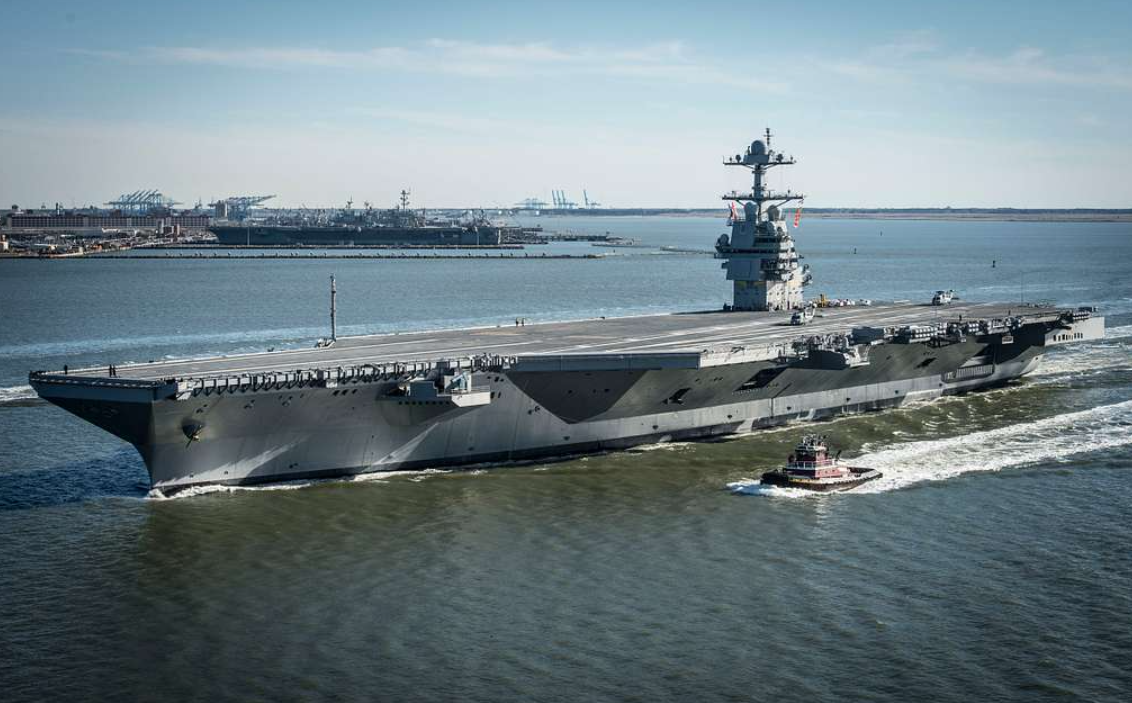Escalation of US-Venezuela Tension amid Increased American Military Buildup
By Raphael McMahon | 17 November 2025
Summary
Since September 2025 the administration of the U.S. President Donald Trump has conducted various lethal airstrikes in the Caribbean and eastern Pacific that have destroyed at least 18 alleged narcotrafficking vessels. The U.S. has also greatly increased its military presence in the Caribbean by deploying a naval task force to the region.
The U.S. accuses Venezuelan President Nicolás Maduro and his government of complicity in trafficking large quantities of cocaine to the U.S. by sea, which serves as a justification for threats of regime change by the U.S. against Venezuela.
Maduro has stated his desire for peace but has mobilised Venezuelan regular and irregular military forces in response to threats from the U.S.
Context
Since Trump’s re-election, the U.S. has classified the Cartel de los Soles, an alleged criminal network with ties to the Venezuelan government, and the Venezuela-based Tren de Aragua gang as Foreign Terrorist Organisations (FTOs). In August 2025, Trump signed a directive approving the use of military force against Latin America-based cartels-turned-FTOs, which provided the official basis for the subsequent military strikes on seagoing vessels in the Caribbean.
In late August, an American fleet comprising several warships and over 4000 sailors and marines was deployed to waters near Venezuela to allegedly combat maritime narcotics trafficking. Since 2 September, the US Navy has killed 67 people in 16 strikes that have destroyed 17 boats. Most of these strikes have occurred in the Caribbean against boats deemed to have been operated by Colombian or Venezuelan FTOs to traffic drugs.
The Venezuelan government sees the American military buildup and strikes as the precursor to a regime-change operation. In August 2025, the U.S. doubled the reward for information leading to Maduro’s arrest to USD 50m. In October 2025, Trump authorised the CIA to conduct covert, supposedly anti-cartel operations on Venezuelan soil. However, Maduro countered that the CIA had been sent “for regime change”. Maduro also pleaded for peace in a message directed to the American people in October 2025. However, both sides remain on high alert; Venezuela has reportedly mobilised 4.5 million members of the National Bolivarian Militia, an auxiliary force of civilians and reservists, to deter a potential American ground invasion. The U.S., meanwhile, has deployed the largest aircraft carrier in the world, the USS Gerald R. Ford, to the Caribbean.
The Trump administration has not sought congressional approval for the strikes, classifying them as part of a “non-international armed conflict” against “unlawful combatants”. Venezuelan ambassador to the UN Samuel Moncada described the strikes as “extrajudicial executions” aimed at civilians in international waters. The U.S. recognises Venezuelan opposition presidential candidate Edmundo González as the victor of the 2024 Venezuelan elections, which saw Maduro declared winner. The elections have been widely deemed fraudulent. Furthermore, despite stating that he does not foresee war with Venezuela, Trump has suggested that Maduro’s days in power are numbered. The most prominent figure of the Venezuelan opposition, 2025 Nobel Prize Winner María Corina Machado, has asked the U.S. for support in her campaign to unseat Maduro. However, Trump has expressed reservations about the efficacy and value of launching military strikes against Venezuela to oust Maduro, indicating that use of force, or an invasion, is unlikely.
Implications
In the USA the extrajudicial nature of the strikes against the alleged drug-carrying boats has provoked opposition from the Democrat party and even some high-ranking Republican politicians, such as Senate Homeland Security Committee Chair and Senator Rand Paul.
This growing domestic opposition is such that a bipartisan group of lawmakers, including Senators Tim Kaine (Democrat), Rand Paul (Republican) and Adam Schiff (Democrat), intend to force a vote to block Trump’s use of military force within Venezuela, citing the need for congressional approval to declare war.
Increasing tension between the Trump and Maduro administrations has also entrenched Latin American regional divisions. The Cuban and Colombian governments have vocalised their opposition to the American military buildup. Cuban President Miguel Díaz-Canel pledged Cuba’s “solidarity” with Venezuela. Colombian President Gustavo Petro told the United Nations General Assembly (UNGA) that American strikes on alleged drug-carrying boats were being used as a pretext to “dominate Colombia and Latin America.”
Brazilian President Lula voiced concern about the tension caused by the American military buildup. However, regional adversaries of Maduro’s Venezuela, such as Ecuador, Paraguay, Argentina and the Dominican Republic, have designated the Cartel de los Soles a terrorist organisation and have not criticised the American military buildup or the prospect of American intervention. The United Nations has called for restraint and de-escalation.
US Navy
Forecast
Short-term (Now - 3 months)
It is highly likely that military tensions between the two nations will continue, that the strikes on alleged drug-carrying vessels will persist and it is almost certain that the U.S. will continue to warn Maduro of the illegitimacy of his mandate to rule Venezuela.
Medium-term (3-12 months)
There will likely be closer domestic political scrutiny of the boat strikes and potential military action by the American Congress and Senate, as more lawmakers from the increasingly isolationist Republican party will highly likely join their Democrat counterparts in opposing direct military action from the Trump administration.
Long-term (>1 year)
A full-blown war between Venezuela and the U.S., or even a limited American ground invasion, is unlikely given prevalent anti-war sentiment on both sides. However, it is highly likely that the U.S. will conduct destabilising espionage operations against Maduro and in favour of the Venezuelan opposition with greater frequency.



